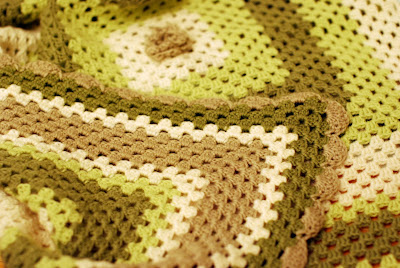Yarn: Baby merino from DROPS in buttery yellow and creamy white
Grams: 87 g
A new baby means a new mum, and new mum usually has stars in her eyes whenever she is gazing at her new offspring.
This baby jacket will make sure that those stars are always there, using daisy stitches to create lovely borders for the bottom of the jacket, the sleeves and the hat.
 The creamy white and the buttery yellow is a perfect gender-neutral combination, and the yellow buttons match the yellow yarn perfectly, as though they were made for each other (lucky purchase, as I did not have a yarn sample with me to the button store).
The creamy white and the buttery yellow is a perfect gender-neutral combination, and the yellow buttons match the yellow yarn perfectly, as though they were made for each other (lucky purchase, as I did not have a yarn sample with me to the button store).The pattern is from Pickles, the Lazy Daisy baby jacket, with a few minor alterations to the amount of daisy stitches. I made the border at the bottom of the jacket thinner, and added borders at the bottom of the sleeves. The jacket, hat and booties are all knitted with circular needles (40cm), size 4.5 mm.
The hat was made without a pattern, just casting on a suitable amount of stitches. With daisy stitches, it is important that the amount of stitches can be divided by 3 + 2. For instance, you can cast on 77 stitches = (3 * 25) + 2.
Knit in the round until you have a suitable amount of rounds, enough to cover the baby's head from the baby's forehead to where flat top of the head starts. Then you are ready to start decreasing. For a baby's hat, I decrease quite rapidly compared to an adult's hat.
Now, yet another baby is soon ready to put stars in the new mother's eyes!










































